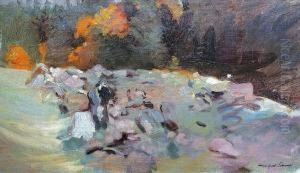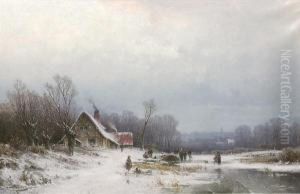Hugo Ernst Schnegg Paintings
Hugo Ernst Schnegg was a Swiss painter and graphic artist, known for his contributions to the Swiss art scene in the late 19th and early 20th centuries. Born on January 22, 1875, in Basel, Switzerland, Schnegg was immersed in an environment that fostered his artistic talents from a young age. He pursued his passion for art by studying at various prestigious institutions, including the Academy of Fine Arts in Munich, where he was exposed to the teachings of some of the era's leading artists and educators.
Throughout his career, Schnegg developed a distinct style that blended elements of realism and impressionism, a reflection of the varied influences he absorbed during his studies and travels. His body of work encompasses a diverse range of subjects, including landscapes, portraits, and still lifes, each marked by a keen attention to detail and a deep sensitivity to the interplay of light and color. Schnegg's landscapes, in particular, are celebrated for their ability to capture the subtle nuances of the Swiss countryside, rendering them with a vibrancy and depth that invite the viewer to explore the scenes depicted.
Beyond his achievements as a painter, Schnegg also made significant contributions to the field of graphic arts. He was adept in various printmaking techniques, and his works in this medium are noted for their technical precision and artistic expressiveness. Schnegg's talent and dedication to his craft earned him recognition and respect among his contemporaries, and his works were exhibited in numerous shows both in Switzerland and abroad.
Despite the acclaim he received during his lifetime, Hugo Ernst Schnegg remains a somewhat underappreciated figure in the broader context of European art history. He passed away on February 20, 1948, in Basel, leaving behind a legacy that continues to be celebrated by art historians and collectors, particularly in his native Switzerland. Through his paintings and prints, Schnegg captured the essence of his environment, offering a window into the Swiss landscape and culture of his time.







